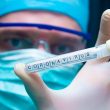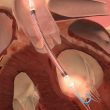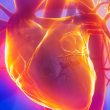As the number of confirmed cases increases throughout the globe, a picture is emerging as to what the direct cardiovascular effects of this pandemic may be. World-renowned physicians such as Alaide Chieffo (from the San Raffaele Hospital, Milan, Italy) have declared that coronavirus came completely unexpected and has put healthcare systems on the verge of...
Another Scandal in Evidence-Based Medicine: Ambulatory BP Monitoring Questioned?
Apparently, the scandal surrounding the EXCEL trial kicked the hornet’s nest as far as evidence-based medicine is concerned. This time, the stars were the actual authors of an article published in the prestigious New England Journal of Medicine (NEJM): the investigators retracted their paper due to issues in data analysis. The aforementioned work was originally...
Impella and Adverse Events
Long after AHA 2019 had presented observational studies showing adverse events associated to Impella, JAMA is finally publishing the official results including all charts and small print. The controversial analysis of the American registry had suggested worse outcomes with the intravascular microaxial left ventricular assist device Impella vs. the intra-aortic balloon pump in acute myocardial...
SOLACI Research | SOLACI’s Innovative Research Area
We have the pleasure to announce the creation of SOLACI’s research department under the name “SOLACI Research”, aimed at fostering clinical research in the region by creating registries, developing local guidelines, core-lab, consultation and training sessions coordinated by SOLACI. All interventional cardiologists meeting our basic requirements willing to participate can join the research department as...
What to Do and What Not to Do in Case of PE According to the New European Guidelines
As a “friendly,” easy-to-read document, the new European guidelines on pulmonary embolism (PE) include an excellent summary chart with new and modified items (compared with the 2014 guidelines), and also some sort of final conclusion composed of crucial tips and contraindications that come in handy in case of emergency. Diagnosis stage In suspected high-risk PE,...
Chronic Coronary Syndromes Nowadays
Multiple drugs and treatment strategies have emerged in recent years to change significantly the prognosis of patients who suffer from stable chronic angina or, in terms of the latest guidelines, “chronic coronary syndromes.” This semantic change may seem of little importance, but it is intended to remind us that these are not stable patients, but...
Is There a “Safe” Dose for Meat Consumption?
Meat consumption is associated with a small but significant increase in cardiovascular disease and all-cause mortality. The dose-response relationship was clear, and no meat “dose” was safe. Eating red meat, both processed (sausages, cold cuts) and unprocessed, is associated with a small increase in mortality according to this analysis that will be published in JAMA...
New European Guidelines on the Management of Lower Limb Acute Ischemia
Clinical practice guidelines are usually tedious and, frankly, while a lot of people make an enormous effort to write them, they are ultimately read in full by just a few. These new European Guidelines on the Management of Lower Limb Acute Ischemia represent a special team effort, since they include physicians, cardiologists, surgeons, and interventionists,...
Repeat Revascularization Is Not Benign, at Least in Left Main Disease
After the “EXCEL scandal” at the end of last year, study investigators have been publishing explanations and sub-studies that were planned from the beginning, but which can still be interpreted as explanations. This sub-study states that revascularization was more common in the angioplasty arm, but only revascularizations performed on the target lesion, regardless of the...
Routine Continuous Monitoring After Angioplasty Might Not Be Necessary
According to a recent study published in Circ. Cardiovasc Interv, after a scheduled angioplasty, the rate of arrhythmia requiring some kind of treatment is very low, low enough to deem unnecessary the routine monitoring of all patients. The standard policy at many institutions is continuous cardiac monitoring for several hours after undergoing coronary angioplasty, with...









